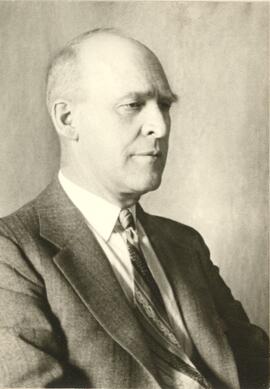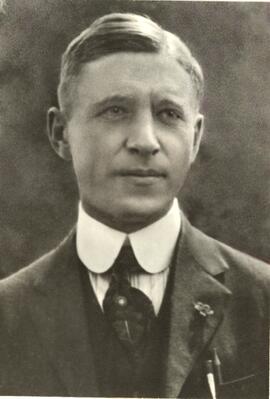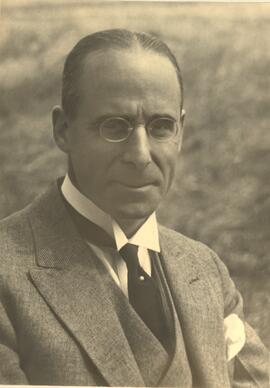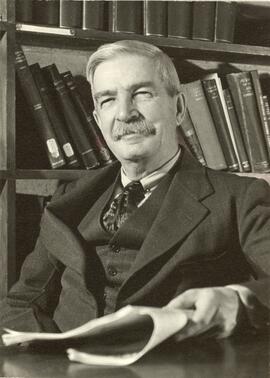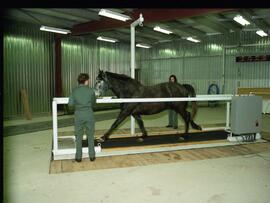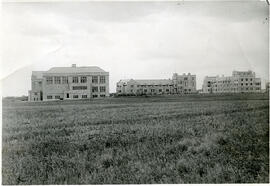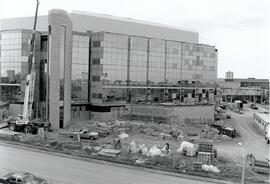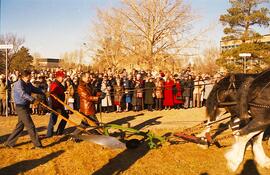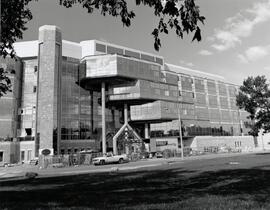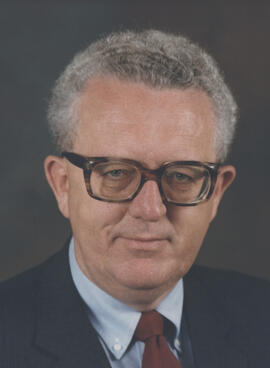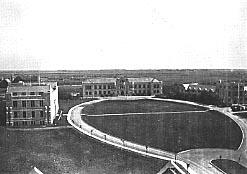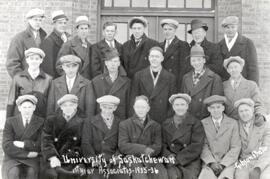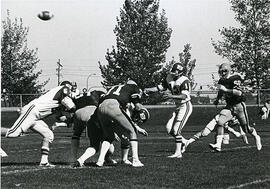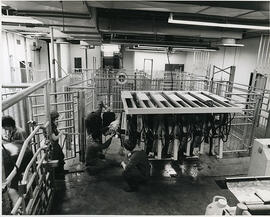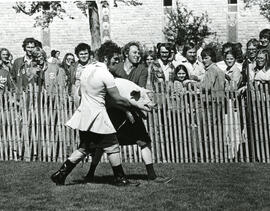Dr. Arthur S. Moxon - Portrait
- A-3152
- Pièce
- [195-?]
Fait partie de University of Saskatchewan Photograph Collection
Head and shoulders image of Dr. Arthur S. Moxon, first Dean of Law, 1909-1939.
Bio/Historical Note: Dr. Arthur S. Moxon was born in 1881 in Truro, Nova Scotia. He received a BA from Dalhousie University in 1906. He then attended Oxford University as a Rhodes Scholar, earning both a BA in jurisprudence and a Bachelor of Common Laws degree. Dr. Moxon was appointed professor of Classics for the new University of Saskatchewan in 1909 and was one of the five original faculty members. Dr. Moxon became a lecturer of Law in 1911 and was promoted to professor of Law in 1913. He was dean of Law from 1919-1929. Dr. Moxon was named King’s Counsel in 1927. He was with the law firm of McLean, Hollinrake and was estates manager of the National Trust Company before he became dean of Law. Dr. Moxon held many positions, including on the University Senate (1934-1937) and was a member of the Board of Governors (1937-1953), serving as chair for four of those years. In 1953 Dr. Moxon received an honourary Doctor of Civil Laws degree from the U of S. Dr. Moxon died in Saskatoon in 1963. He was the last survivor of the band of five pioneers who constituted the original faculty of the University: Bateman, Ling, Moxon, Murray and Oliver. At the time of his death he was University Solicitor. The College of Law Alumni Association established a scholarship fund in his honour for post-graduate study. Moxon Crescent in the Greystone Heights neighborhood of Saskatoon also honours him.



